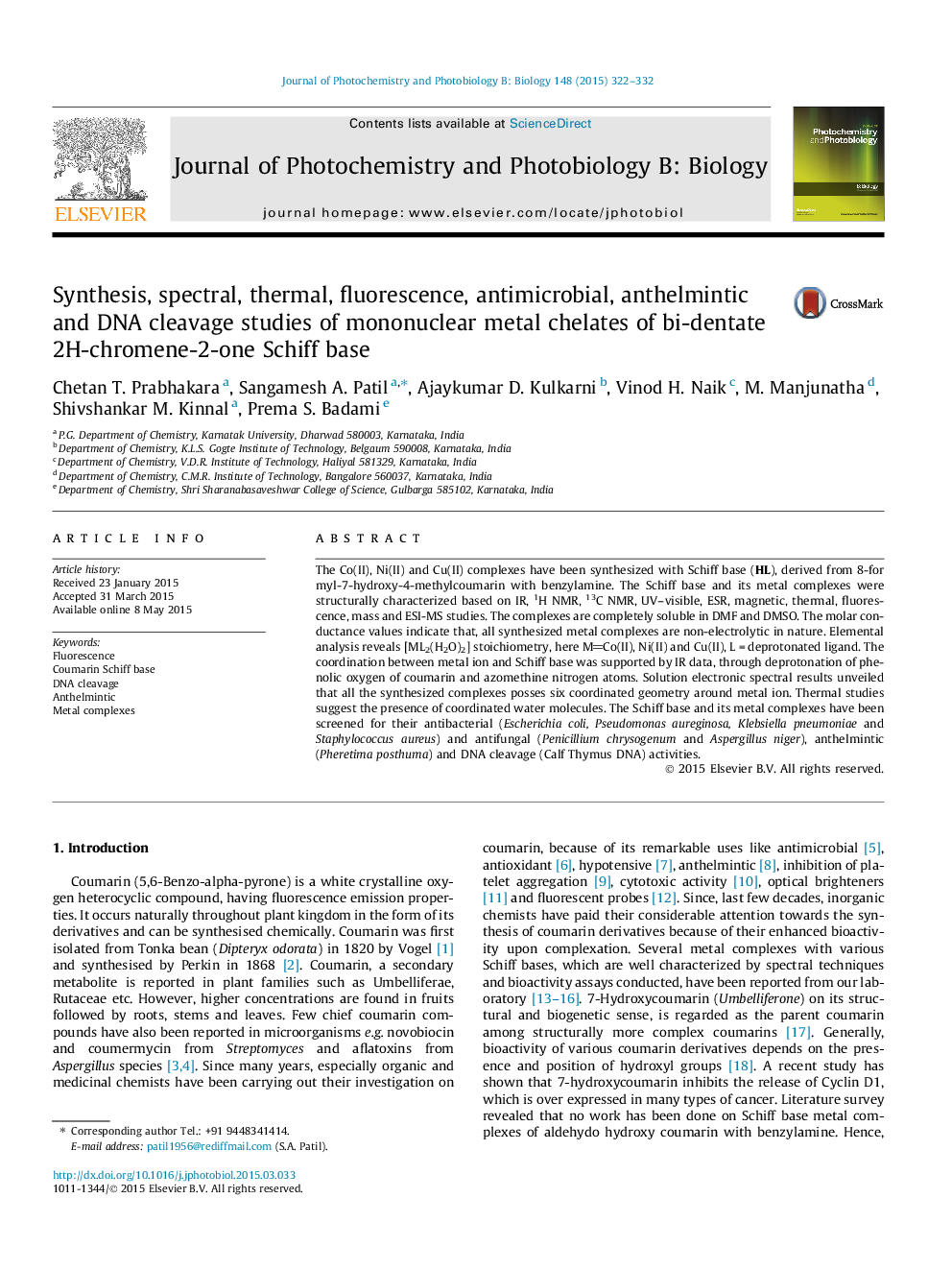| Article ID | Journal | Published Year | Pages | File Type |
|---|---|---|---|---|
| 29721 | Journal of Photochemistry and Photobiology B: Biology | 2015 | 11 Pages |
•Characterization of metal complexes using various spectroscopic techniques.•Fluorescence emission study reveal the quenching of Schiff base fluorescence.•Cu(II) complex of coumarin Schiff base has shown promising biological activities.
The Co(II), Ni(II) and Cu(II) complexes have been synthesized with Schiff base (HL), derived from 8-formyl-7-hydroxy-4-methylcoumarin with benzylamine. The Schiff base and its metal complexes were structurally characterized based on IR, 1H NMR, 13C NMR, UV–visible, ESR, magnetic, thermal, fluorescence, mass and ESI-MS studies. The complexes are completely soluble in DMF and DMSO. The molar conductance values indicate that, all synthesized metal complexes are non-electrolytic in nature. Elemental analysis reveals [ML2(H2O)2] stoichiometry, here MCo(II), Ni(II) and Cu(II), L = deprotonated ligand. The coordination between metal ion and Schiff base was supported by IR data, through deprotonation of phenolic oxygen of coumarin and azomethine nitrogen atoms. Solution electronic spectral results unveiled that all the synthesized complexes posses six coordinated geometry around metal ion. Thermal studies suggest the presence of coordinated water molecules. The Schiff base and its metal complexes have been screened for their antibacterial (Escherichia coli, Pseudomonas aureginosa, Klebsiella pneumoniae and Staphylococcus aureus) and antifungal (Penicillium chrysogenum and Aspergillus niger), anthelmintic (Pheretima posthuma) and DNA cleavage (Calf Thymus DNA) activities.
Graphical abstractFigure optionsDownload full-size imageDownload as PowerPoint slide
